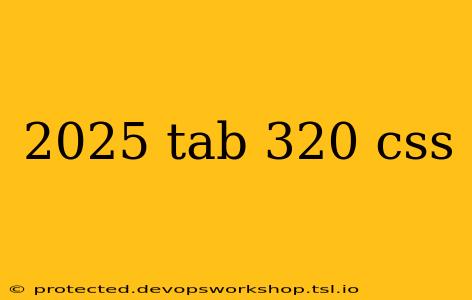The Samsung Galaxy Tab S8 Ultra (while not released in 2025 at the time of writing) and similar high-resolution tablets present unique challenges and opportunities for web developers. Creating a responsive and visually appealing website experience across different screen sizes requires a deep understanding of CSS. This guide delves into the key CSS techniques for optimizing your website for the 2025 tablet landscape and beyond, specifically targeting devices with a screen size similar to the Tab S8 Ultra's impressive 14.6-inch display.
Understanding the 2025 Tablet Landscape
Before diving into the specifics of CSS, it’s crucial to understand the evolving landscape of tablets in 2025 (and beyond). We anticipate continued growth in screen resolutions and pixel densities, meaning higher resolution images and more detailed designs are becoming the norm. Furthermore, the increasing popularity of foldable tablets further complicates the design process, demanding even more flexible and responsive websites. This means your CSS needs to adapt to handle a wide range of screen sizes, aspect ratios, and orientations.
Core CSS Techniques for Tablet Optimization
Here are some essential CSS techniques to ensure optimal website performance on high-resolution tablets like the hypothetical 2025 Tab S8 Ultra or similar devices:
1. Responsive Design with Media Queries
This is the cornerstone of tablet optimization. Media queries allow you to apply different CSS styles based on screen size, resolution, orientation, and other device characteristics. By utilizing media queries effectively, you can tailor your website's layout and design to perfectly fit the tablet's screen, ensuring readability and user experience.
/* Example Media Query for Tablets */
@media (min-width: 768px) and (max-width: 1024px) {
/* Styles for tablets */
body {
font-size: 18px;
}
.main-content {
width: 70%;
margin: 0 auto;
}
}
This example shows a basic media query targeting tablets with widths between 768px and 1024px. You'll need to adjust these values based on the specific dimensions of your target devices. Remember to test your media queries thoroughly on various devices.
2. Flexible Images and Image Optimization
High-resolution tablets demand high-quality images. However, loading large images can significantly impact page load speed. Use max-width: 100% and height: auto for images to ensure they scale responsively without distorting their aspect ratio. Optimize images for web using tools like TinyPNG to reduce their file size while maintaining visual quality.
3. Fluid Grid Systems
Instead of using fixed-width layouts, implement a fluid grid system using percentages or viewport units (vw, vh). This allows your website to adapt seamlessly to different screen sizes. Popular CSS frameworks like Bootstrap and Tailwind CSS offer pre-built fluid grid systems, simplifying development.
4. Targeting Specific Devices (Advanced Techniques)
While media queries handle most scenarios, you can leverage more advanced techniques for fine-grained control. User-agent stylesheets allow you to target specific browsers and devices, though this method is less recommended due to its fragility and potential for breaking when devices update.
5. Efficient CSS Preprocessing
Use CSS preprocessors like Sass or Less to write more maintainable and organized CSS. These tools offer features like variables, mixins, and nesting, making it easier to manage complex stylesheets.
Beyond Screen Size: Enhancing the User Experience
Optimizing for screen size is only part of the equation. Consider these additional factors:
- Touchscreen Interactions: Ensure elements are large enough to be easily tapped. Consider adding hover effects that are also triggered by touch events.
- Accessibility: Follow accessibility best practices to make your website usable for everyone, including users with disabilities.
- Performance Optimization: Minimize HTTP requests and optimize images to ensure fast loading times, crucial for a positive user experience on tablets.
Conclusion
Creating a compelling website experience on high-resolution tablets like those expected in 2025 requires a nuanced approach to CSS. By mastering the techniques outlined above and focusing on user experience, you can ensure your website looks and performs its best on a wide range of devices, capturing a larger audience and leaving a lasting impression. Remember to constantly test and iterate your CSS to adapt to the ever-evolving mobile landscape.

